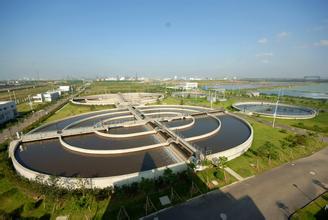 Drying Technology
Drying Technology
Keywords: sludge drying 、wastewater treatment、sludge dryer
According to the “National List of Centralized Facilities” announced by the Ministry of Ecology and Environment in 2020, most domestic are currently small in scale and relatively scattered. The transportation cost of mud increases.
The combination of unit and body is a technology that is very suitable for use in sewage treatment plants. The main features of this technology are modular assembly, flexible treatment capacity, and the entire system only consumes electricity and has no exhaust emissions. Compared with the medium temperature drying technology, it can effectively solve the problems of high energy consumption and large exhaust heat loss, and the energy saving effect is more significant.

At present, there are relatively few studies on the application of+ multi-layer belt dryer combination technology in the field of sludge drying. In this paper, the combination of heat pump unit and multi-layer belt dryer is used to, and the influence of factors such as the number of belt layers and residence time on the sludge drying effect is studied. Provide the basis for structural design and selection.
system process: The sludge is cut into strips by the forming machine and then enters the belt dryer mesh conveyor belt. The dry hot air heated by the heat pump is sent to the dryer from the lower part of the belt dryer through the fan, and passes through the conveyor belt vertically to exchange heat with the on the conveyor belt, so that the water in the sludge evaporates. The generated hot and humid air is sent back to the heat pump after being dedusted by the cloth bag through the fan, condensed and dehumidified in the heat pump, and then heated up again and then enters the dryer to heat the sludge.
The low-temperature heat pump belt drying system is a closed circulation system, and the hot air can be recycled after being heated and dehumidified, without the need for external exhaust gas. In the process of sludge heating and drying, volatile organic compounds will be produced, which will be dissolved in the condensate along with the condensation of water vapor in the exhaust gas, so that the contains a small amount of pollutants such as COD, BOD and ammonia nitrogen. Compared with the medium temperature drying technology, the low temperature heat pump belt drying technology produces a relatively low concentration of wastewater pollutants. This is because the heat pump belt drying technology dries the sludge at a lower temperature, on the one hand, the protein and fat are hydrolyzed
The possibility and degree of hydrolysis are reduced, and on the other hand, the types and contents of volatile organic compounds produced are relatively small. At the same time, the wastewater produced by the low-temperature heat pump technology is lower than the "Urban Sewer Water Quality Standard" and slightly higher than the "Comprehensive Wastewater Discharge Standard", which means that the cost of the low-temperature heat pump is lower.
Sludge has larger inner and outer surface area due to its porous capillary structure at lower moisture content. This structural form makes the sludge have significant hygroscopic characteristics. The low relative humidity of the air leads to the low water carrying rate of the sludge, which is due to the adsorption and bonding of a monolayer of water molecules on the surface of the sludge. As the air humidity increases, a multi-layered coating of water molecules is formed. With a further increase in air humidity, it ends up on the sludge surface.
In the process, in addition to the input of energy to evaporate the moisture in the sludge, the additional energy of the water on the sludge is used to release the moisture associated with the sludge adsorption. Obviously, when the sludge has a low water loading rate, that is, when the residual water in the sludge is small, relatively high drying energy is required, and its energy will account for about 15% to 20% of the.
The solid content of sludge after mechanical dewatering is about 20%~35%. The sludge viscosity is very high at this time. Many dryers have considerable conveyance problems for the paste-like, viscous sludge at this stage. In order to use some types of drying equipment to dry the sludge to a low moisture content and avoid going through the viscous stage, the fully dried sludge product is generally recycled and mixed with the dewatered sludge before entering the inlet. Mixing in a specially designed device to adjust the solid content of the mixed sludge to be higher than the solid content of the "viscous stage", while avoiding the viscous zone. The unfavorable sludge back-mixing at first glance actually has many advantages, such as: by back-mixing different amounts of dry sludge, the sludge drying system can adapt to the fluctuation of the moisture content of dewatered sludge; in the special mixing device The back-mixing in the sludge can form particles with wear resistance, large external surface area and a certain particle size range, which is beneficial to the sludge drying process and improves the quality of the dried product; the dust that is inevitably generated by complete drying is technically safe. is dangerous and can be optimally reintroduced into the material by means of a backmixing system.
is dangerously combustible due to its relatively high organic content, similar to lignite, coking coal and other substances. In order to safely handle this fully dried sludge, especially the slightly larger volume of dust, it is necessary to have a comprehensive knowledge of this hazard. To ensure the safe operation of the equipment, precautions against fire and dust explosions are required.
Special attention must be paid to dewatered sludge and the intermediate pile of partially dried sludge in the silo
may release biogas. Due to the generation of residual gas, due to technical safety reasons, adequate ventilation and biogas monitoring measures must be observed in any case.